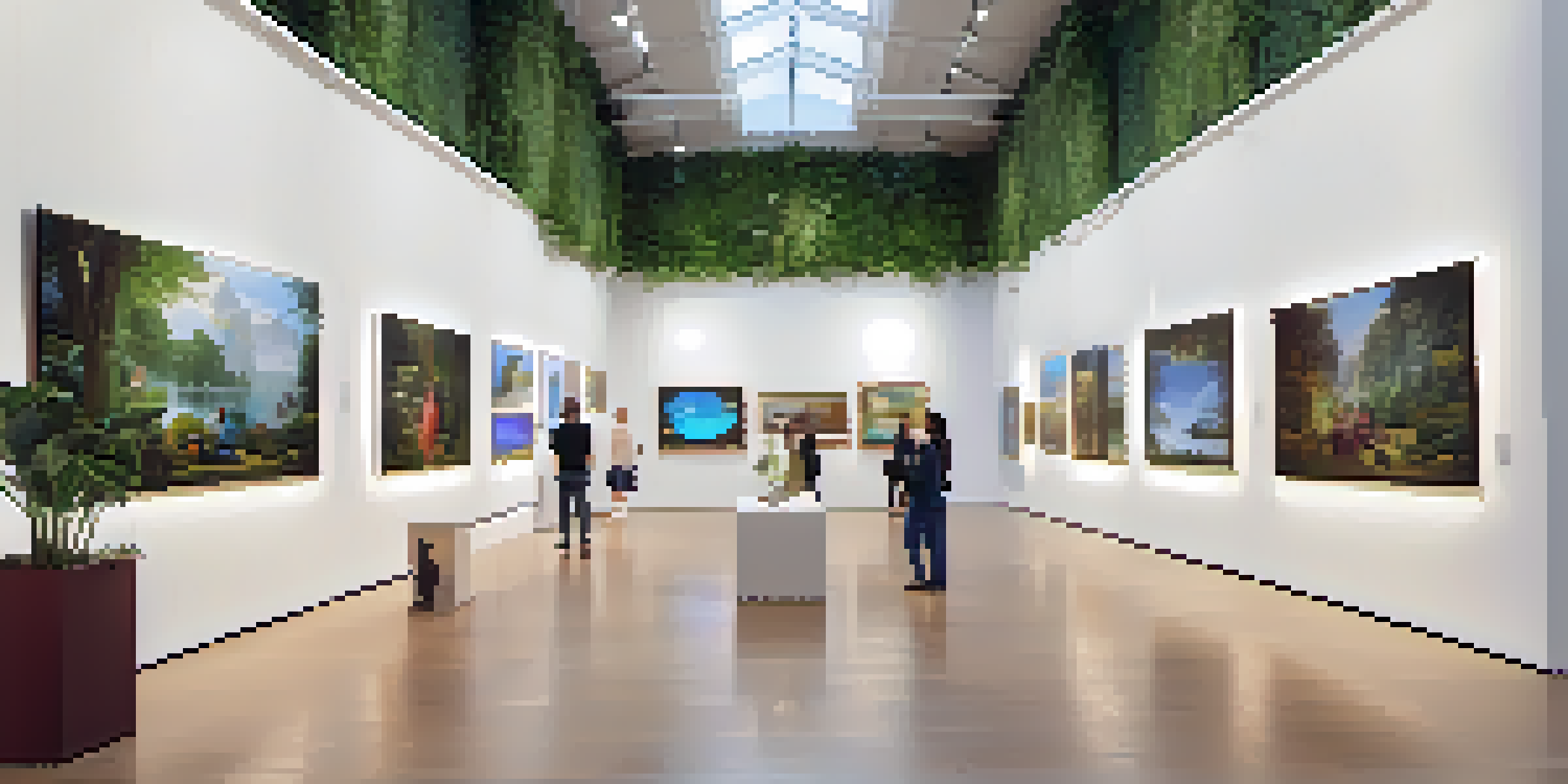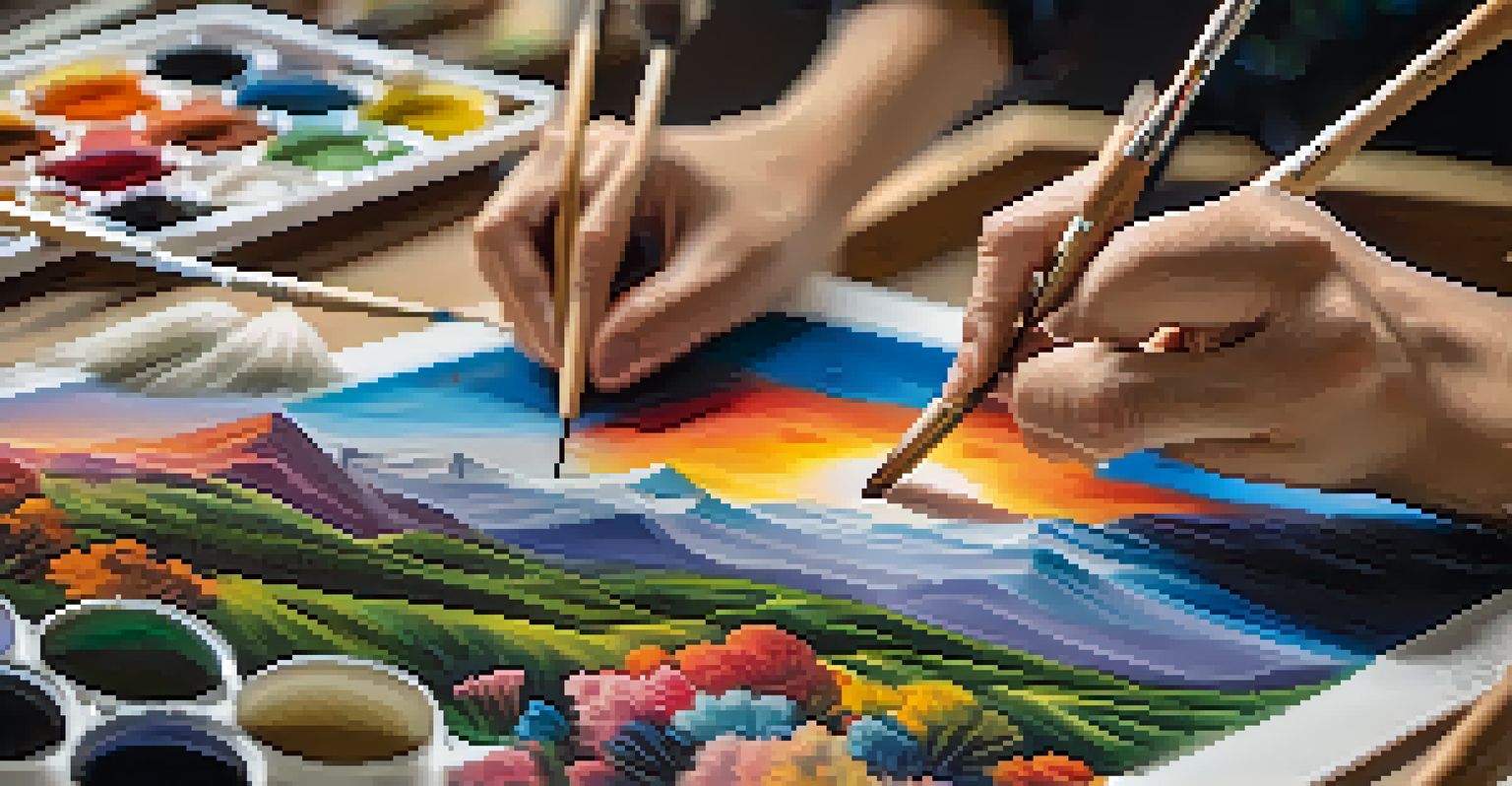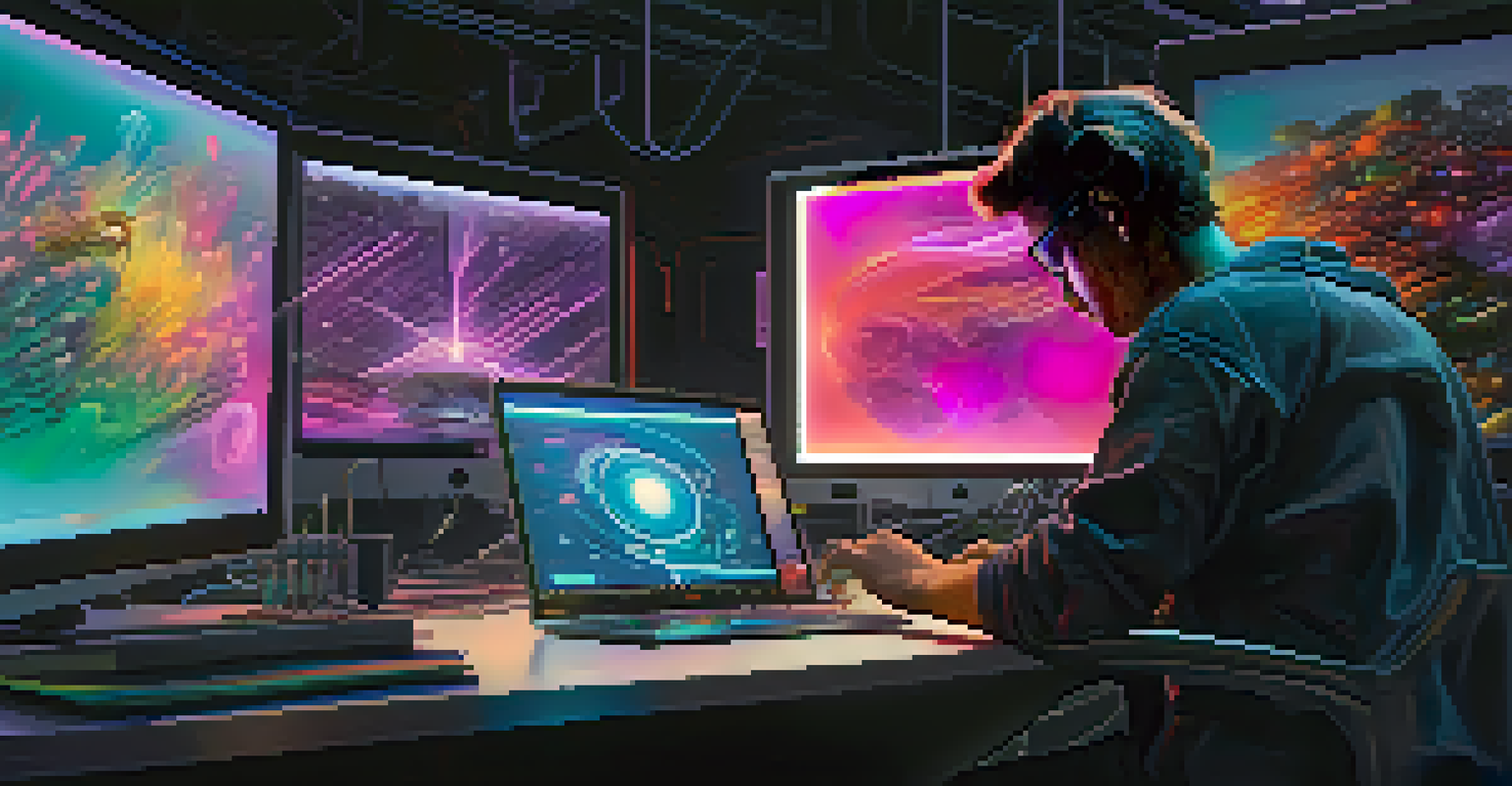NFTs vs. Traditional Art: Key Differences and Similarities

What Are NFTs and Traditional Art?
NFTs, or Non-Fungible Tokens, are unique digital assets that represent ownership of a specific item, often artwork. In contrast, traditional art encompasses physical works like paintings and sculptures that have been created for centuries. While both forms represent creativity, NFTs exist in a digital realm, allowing for new possibilities in art ownership and distribution.
Art is not what you see, but what you make others see.
Imagine holding a beautiful painting in your hands; that tactile experience is something traditional art offers. However, with NFTs, the experience shifts to the digital world, where ownership is tracked on a blockchain. This technology ensures that each NFT is one-of-a-kind, much like an original painting, but it also opens up exciting new avenues for artists and collectors alike.
Both NFT and traditional art serve as expressions of creativity, but they cater to different audiences and mediums. Traditional art often appeals to those who appreciate the physicality of art, while NFTs attract tech-savvy individuals interested in digital ownership and innovative investment opportunities.
Ownership: Digital vs. Physical
Ownership in the realm of traditional art is straightforward: if you buy a painting, you own that physical piece. With NFTs, however, ownership is represented through a digital certificate stored on the blockchain, proving you are the rightful owner of that specific digital item. This distinction can sometimes lead to confusion for those new to the NFT space.

Think of it this way: owning a traditional painting is like having the only key to a treasure chest. Conversely, owning an NFT is like having a deed that proves your treasure is safely locked away in a digital vault. Both ownership types come with their own sets of rights and responsibilities, but the nature of the assets is vastly different.
NFTs vs. Traditional Art Ownership
NFTs represent digital ownership through blockchain, while traditional art offers tangible assets.
As the market for NFTs continues to grow, understanding the nuances of ownership becomes crucial. While both types of ownership are valuable, the implications of having a digital asset versus a physical one can influence how collectors approach their investments and collections.
Market Value: Trends and Influences
The market value of traditional art has been influenced by various factors, such as the artist's reputation, historical significance, and rarity. In the world of NFTs, market value is similarly determined, but it is also affected by trends in technology, social media, and the overall crypto market. This volatility can lead to rapid changes in valuation that may seem foreign to traditional art collectors.
The digital world is the new frontier of creativity and artistic expression.
For example, consider how a famous painting's value can rise over decades due to its artist's legacy. In contrast, an NFT can skyrocket in value within weeks, especially if it goes viral on social platforms. This speed of change is both exhilarating and risky, making the NFT market a rollercoaster ride for investors.
Understanding these market dynamics is essential for anyone looking to dive into either art form. While traditional art often appreciates steadily, NFTs may offer opportunities for quick profits but come with significant risks, emphasizing the need for careful research and consideration.
Accessibility: Who Can Create and Buy?
Traditionally, the art world has been seen as exclusive, with barriers such as gallery representation and high prices deterring many aspiring artists. However, NFTs have democratized art creation and ownership, allowing anyone with internet access to create, sell, or purchase digital art. This shift has opened the doors for diverse voices and talents that might have been overlooked in the traditional art scene.
Imagine being an artist in a small town with no gallery representation; with NFTs, you can showcase your work online and reach a global audience. This accessibility is a game-changer, empowering creators to take control of their careers in ways that were once impossible. It also means that collectors can discover emerging artists from around the world with a simple click.
Accessibility in the Art World
NFTs have democratized art creation and ownership, allowing diverse voices to flourish without traditional barriers.
While both art forms have their own challenges, NFTs are breaking down barriers that have historically limited who gets to participate in the art world. This inclusivity not only benefits artists but also enriches the overall art community by introducing fresh perspectives and innovation.
Artistic Expression: Mediums and Techniques
In traditional art, mediums such as oil, acrylic, or watercolor paint define the artist's expression. Artists carefully choose their materials to convey emotions and ideas through tactile and visual means. On the other hand, NFTs allow for creativity that transcends physical limitations, enabling artists to explore digital techniques like animation, virtual reality, and interactive elements.
Consider how an artist might create a stunning oil painting, capturing a moment in time. Now, envision that same piece transformed into a dynamic NFT, where colors shift and movement brings the art to life. This evolution of artistic expression challenges traditional notions of what art can be and how it can engage audiences.
Both forms of expression are valid and valuable, yet they cater to different artistic visions. The evolution of technology has expanded what is possible in digital art, allowing creators to push boundaries and experiment in ways that traditional mediums cannot always accommodate.
Cultural Impact: Shaping the Art World
Traditional art has long served as a reflection of culture, history, and societal values, influencing generations of artists and collectors. Similarly, NFTs are beginning to shape the cultural landscape, especially among younger audiences who are more attuned to digital innovations. This cultural shift raises questions about how we value art and the role it plays in our lives.
For instance, street art has evolved into a celebrated form of traditional art, while digital graffiti can find its home in the NFT realm. The blending of physical and digital art forms is reshaping our understanding of culture and creativity, allowing for new interpretations and discussions that resonate in today's fast-paced world.
Future of Art: A Hybrid Approach
The future of art will likely blend traditional and digital practices, fostering collaboration and new experiences.
As NFTs gain traction, their impact on culture will likely continue to grow, encouraging conversations about ownership, authenticity, and the future of art. This evolving dialogue is vital for understanding how both traditional and digital art will coexist and influence future generations.
Future Outlook: What Lies Ahead for Both Worlds?
The future of art is poised to be an exciting blend of traditional and digital practices. As technology continues to evolve, we may see more collaborations between traditional artists and NFT creators, leading to hybrid art forms that merge the best of both worlds. This collaborative spirit could redefine how we experience and appreciate art in the years to come.
Imagine a gallery where physical paintings are displayed alongside digital screens showcasing NFTs, creating a dynamic and immersive experience. Such innovations could attract a broader audience, drawing in both traditional art lovers and tech enthusiasts eager to explore the possibilities of digital artistry.

Ultimately, the future of art will depend on how both communities adapt and embrace change. By fostering an open-minded approach, artists and collectors alike can navigate this exciting landscape and discover new ways to engage with art, ensuring that both traditional and digital forms continue to thrive.